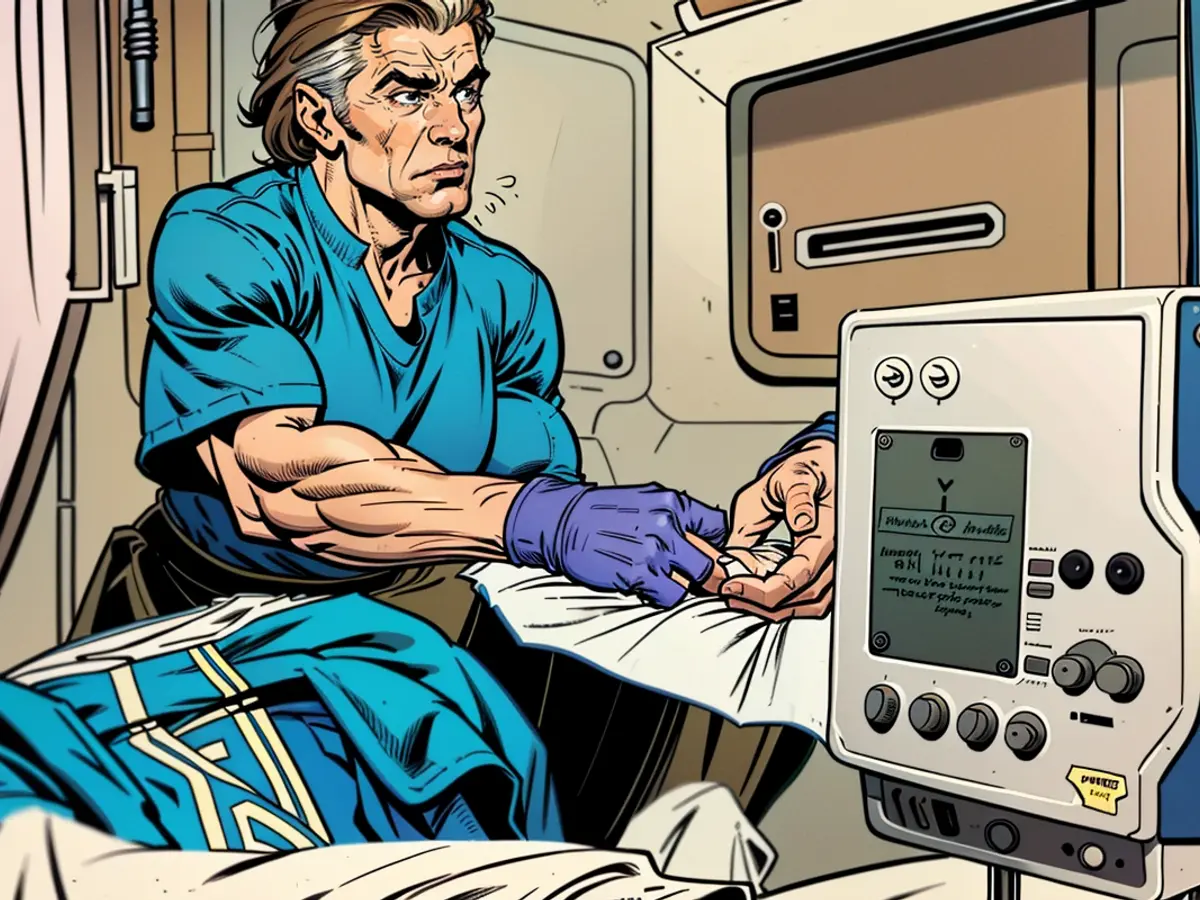What level of awareness do individuals in a coma maintain?
When relatives or medical professionals visit patients in a coma due to severe brain injury, they're often advised to talk to them. But just how much awareness do these seemingly unconscious individuals retain? A research team is exploring this question by examining brain activity.
Following a severe brain injury, there's often doubt about whether the patient has regained consciousness. If there's no visible response to being addressed, it's often assumed that they're still deeply comatose and unaware.
However, recent research suggests that this may not always be the case. Some individuals display no outward signs of reacting to being addressed, yet their brains show signs of cognitive activity. Previous studies at individual research centers discovered such activity in around 15 to 20 percent of patients. A new study published in the prestigious journal "New England Journal of Medicine" increases this estimate to approximately 25 percent.
Yelena Bodien, the first author of the study and a researcher at the Center for Neurotechnology and Neurorehabilitation at Massachusetts General Hospital, explains: "Patients with severe brain injuries may appear to ignore their external environment. But with advanced techniques such as functional magnetic resonance imaging (fMRI) and electroencephalography (EEG), we can detect brain activities that suggest otherwise."
The study examined patients with severe brain injuries from the U.S. and Europe, including those who had experienced a traffic accident with a traumatic brain injury, a stroke, or cardiac arrest followed by resuscitation. While their brains were being scanned during tests, they were given instructions, like "Visualize opening and closing your hand" or "Visualize participating in a sport."
Of the 241 participants, most of whom were lying in bed, none appeared to react visibly. However, 60 of them followed the instructions internally for minutes. These individuals were attentive, understood language, and displayed temporary memory ability, according to the authors.
The study raises ethical questions, says Julian Bösel, spokesperson for the Commission on Neurological Intensive Care of the German Society of Neurology. It involves the largest patient group ever, was conducted at six medical centers, and has systematically captured the phenomenon more effectively than previous research, says the neurologist, who is active at the University Hospital Heidelberg and was not involved in the study.
Severe brain injuries can affect consciousness, with coma being the state of complete unconsciousness without eye opening, even in response to pain. If someone occasionally opens their eyes and exhibit distinguishable sleep-wake phases, but no other clinical signs of awareness, it was formerly known as a vegetative state, but today it's called the syndrome of unresponsive wakefulness (SRW). This is distinguishable from a state with preserved minimal consciousness, where eye following movements are present or simple commands are followed.
Such consciousness disturbances can last for days, weeks, months, or even years. "Studies like the current one could, in certain circumstances, provide reason to examine more of these patients with EEG and observe them over longer periods," says Bösel. It might lead to the conclusion that some patients should be given more time in doubtful cases.
But it's unclear whether special therapies benefit such individuals. For a long time, efforts have been made to achieve results through behavioral therapies, medication, or other methods, but with few positive or lasting outcomes. A team from Massachusetts General Hospital also uses modern technology by aiming to establish a connection between the brains of such patients and computers to enable communication via brain-computer interfaces.
Frank Erbguth, President of the German Brain Foundation, agrees that the study does not provide any groundbreaking new insights. "The phenomenon exists," he says. "But just because electrical patterns or active regions are detected in the brain, it does not mean these individuals have a higher level of consciousness. Such activity can also be found in the fMRI or EEG of anesthetized individuals."
Both experts agree on one thing: "Patients on intensive care and rehabilitation units should always be treated as if they understand something," says Erbguth. "We talk to them and treat them respectfully. This is already the case today."
It's challenging to provide accurate figures on the number of individuals who display cognitive abilities without showing behavioral signs. Both the study authors and German experts acknowledge that making definitive statements is difficult, as the test methods were not standardized, and the patients had diverse brain damage causes.
Despite these challenges, emphasizes Bösel, the percentage figures from studies like this suggest: "It's likely that more consciousness-impaired individuals than previously thought are aware of their surroundings." He believes that it's still common in many places for people to talk to comatose patients as if they're not present. "Many nursing professionals are skilled at greeting the patient, introducing themselves, and explaining what they're doing to them," he says.
Everyone should keep this in mind, including doctors during ward rounds and visiting relatives, and avoid discussing frightening topics at the patient's bedside. "We stand at the bedside and don't really know what's happening inside their skulls," says Bösel. "It's important to approach this situation with humility."
Despite appearing unresponsive, some individuals with severe brain injuries may exhibit cognitive activity within their brains, as suggested by recent research. Advanced techniques like fMRI and EEG can detect this hidden brain activity, even when outward responses are absent.







